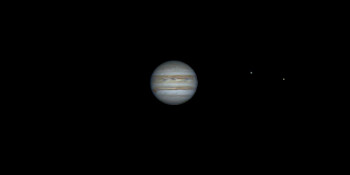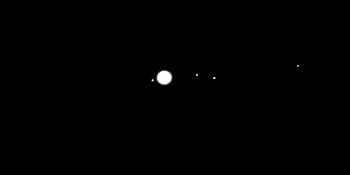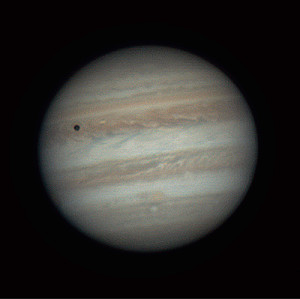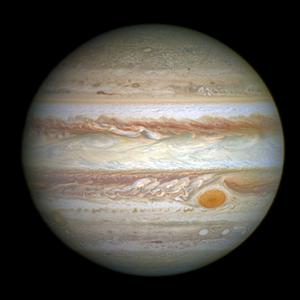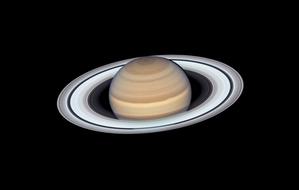Glossary term: Gas Giant
Description: A gas giant is a giant planet mostly composed of hydrogen and helium which are gases in interstellar and interplanetary space, hence the name. However, most of the hydrogen and helium in gas giants is actually in a liquid state.
Gas giants are thought to have rocky cores which are surrounded by thick layers of hydrogen and helium. In the deepest parts of the planet these gases are compressed into liquid form with the deepest layers thought to contain an ocean of metallic hydrogen. In the outer layers the hydrogen and helium are in gas form. Other elements in the atmosphere can form clouds and rain. In the coolest gas giants the clouds in the upper layer can be made of water or ammonia vapor. In deeper, hotter layers of cooler gas giants and in the outer layers of hotter gas giants the clouds can be made of iron and minerals which are solid at room temperature.
The two largest planets in the Solar System, Jupiter and Saturn, are gas giants.
Related Terms:
See this term in other languages
Term and definition status: This term and its definition have been approved by a research astronomer and a teacher
The OAE Multilingual Glossary is a project of the IAU Office of Astronomy for Education (OAE) in collaboration with the IAU Office of Astronomy Outreach (OAO). The terms and definitions were chosen, written and reviewed by a collective effort from the OAE, the OAE Centers and Nodes, the OAE National Astronomy Education Coordinators (NAECs) and other volunteers. You can find a full list of credits here. All glossary terms and their definitions are released under a Creative Commons CC BY-4.0 license and should be credited to "IAU OAE".
Related Media
Jupiter's Rotation, by Vishal Sharma, India
Credit: Vishal Sharma/IAU OAE
License: CC-BY-4.0 Creative Commons Attribution 4.0 International (CC BY 4.0) icons
Jupiter Moons Movie2, by Nicolas Hurez, Paul-Antoine Matrangolo, and Carl Pennypacker, United States of America
Credit: Nicolas Hurez, Paul-Antoine Matrangolo and Carl Pennypacker/IAU OAE
License: CC-BY-4.0 Creative Commons Attribution 4.0 International (CC BY 4.0) icons
Jupiter, Io and its shadow, by Ralf Burkart, Germany
Credit: Ralf Burkart/IAU OAE
License: CC-BY-4.0 Creative Commons Attribution 4.0 International (CC BY 4.0) icons
Jupiter
Credit: NASA, ESA, and A. Simon (Goddard Space Flight Center) credit link
License: CC-BY-4.0 Creative Commons Attribution 4.0 International (CC BY 4.0) icons
Saturn
Credit: NASA, ESA, A. Simon (Goddard Space Flight Center), and M.H. Wong (University of California, Berkeley) credit link
License: CC-BY-4.0 Creative Commons Attribution 4.0 International (CC BY 4.0) icons
